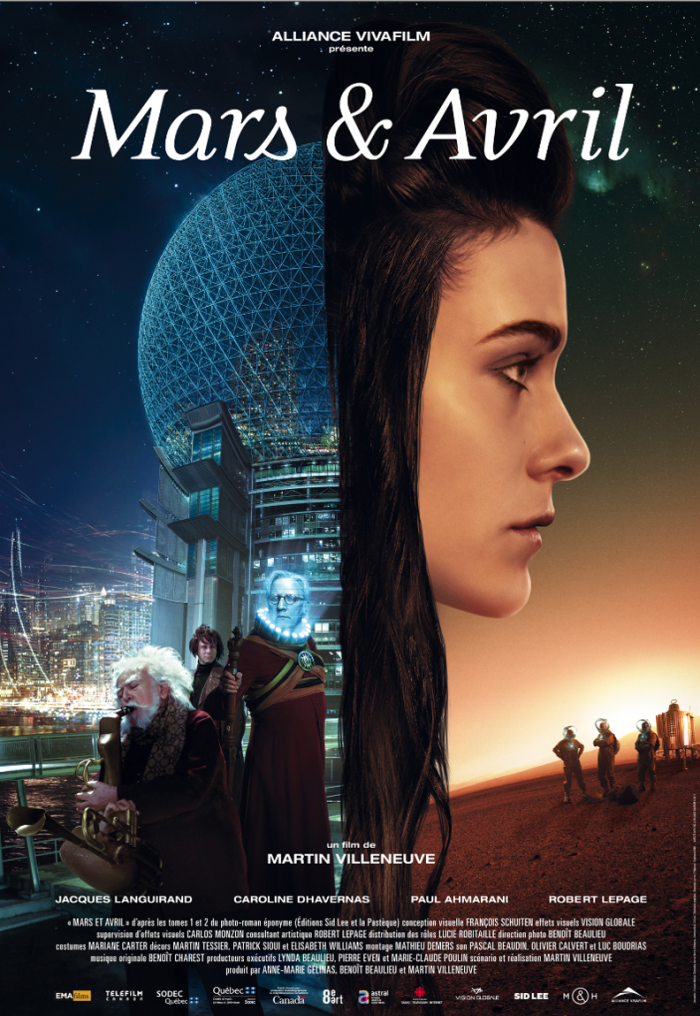- English
- Français
- Nederlands
Mars et Avril – Loyalty rewarded
This article is originally published by Martin Villeneuve on Bulb as “Schuiten: The Watchmaker of Dreams”.
In Mars et Avril, the city is more that just background; it has its own personality, with its own heartbeat, life, and futuristic body. Despite their utopian preconception, director Martin Villeneuve and production designer François Schuiten wished to see a futuristic Montreal on the big screen that is by and large believable and not satirical. They developed the idea that architects, urban planners, and engineers from the future would only add to the existing framework, or replace it gradually, in order to deal with change and adapt to new norms.
The great thing about science fiction is that it tells us who we are now, because the future we imagine today is the product of our era. That’s why I love utopias – every utopia reveals the era in which it was conceived. I couldn’t care less if they actually come to be. Sometimes predictions are off, and that’s fine, because it forces us to dream that much bigger!
François Schuiten, production designer
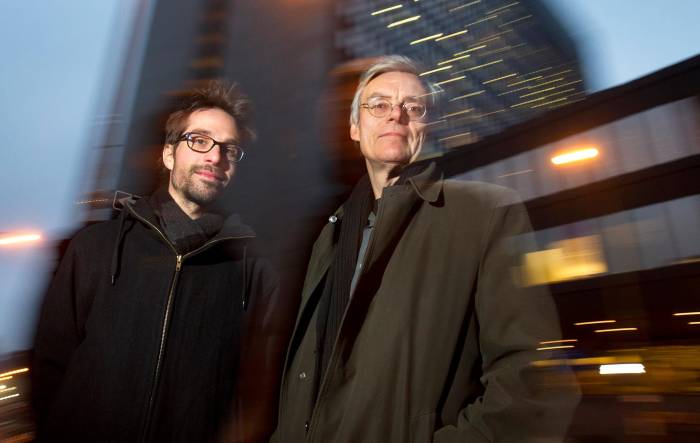
The following is an excerpt from the book François Schuiten, L’Horloger du Rêve by Thierry Bellefroid, Casterman © 2013, pages 372 to 379.
On June 2nd, 2007, Quebec director Martin Villeneuve is in Paris. He receives the following email: “Dear Mr. Villeneuve, your ambitious project has reached my hands and it is with great interest that I discovered it. Of course, it is essential that we have the opportunity to discuss, before anything else. While you’re in Paris, would you care to join me for a meeting in Brussels? I’ll be happy to talk things over with you. Sincerely, François Schuiten.”
On April 3rd, 2013, the movie Mars et Avril is screened in Brussels, at the Brussels International Fantastic Film Festival. In the great hall of the Palais des Beaux-Arts, all of Schuiten’s friends are invited. Villeneuve is also there to present his film. That day, even if it’s not the world premiere, for Martin and François it’s the end of an adventure that lasted six years.
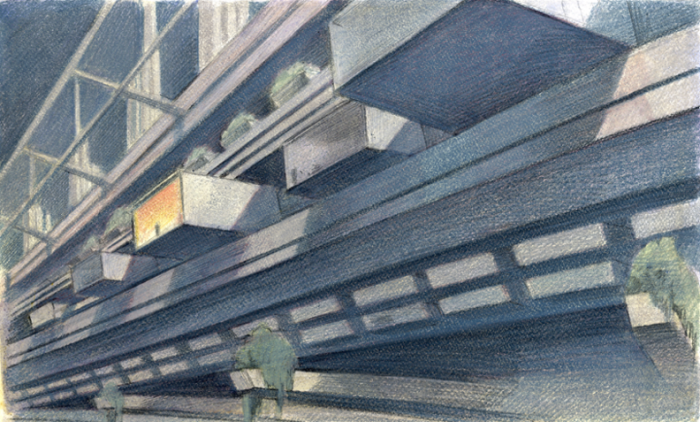
It all begins shortly after the year 2000, when the young Martin Villeneuve publishes a very special graphic novel called Mars et Avril (La Pastèque, 2002-2006). A hybrid, clever mingling of theatrical script, comic book, romantic photo-novel, philosophical treatise, graphic design exercise and science fiction novel about the conquest of Mars. The two volumes were released in Quebec to critical acclaim and multiple awards. And Martin Villeneuve, whose older brother is already an established filmmaker, is set to adapt his books himself as his first feature.
Villeneuve is a great admirer of the work of Schuiten in general, and especially of his comic book series Les Cités Obscures (published in English by Atomic Vision as The Obscure Cities). When it comes to imagine his world transposed onto the big screen, he naturally thinks of Schuiten. He wanted the source of his inspiration to play a direct role in the creation of the film rather than try to mimic his style. One must admit that the film project is what François knows better and loves doing: projecting Montreal in the future. “This is precisely what Schuiten is doing with Les Cités Obscures: he reinvents cities, says Martin Villeneuve. The other reason that led me to him is that I was trying to marry the old and the new, as a metaphor for the unusual love story between an old musician and a young muse, but also because I was aiming for a “retro-futuristic” look, for which Schuiten is a master. Every shot of the film uses timeless icons from the past, but also contains futuristic elements adding a touch of eccentricity.”
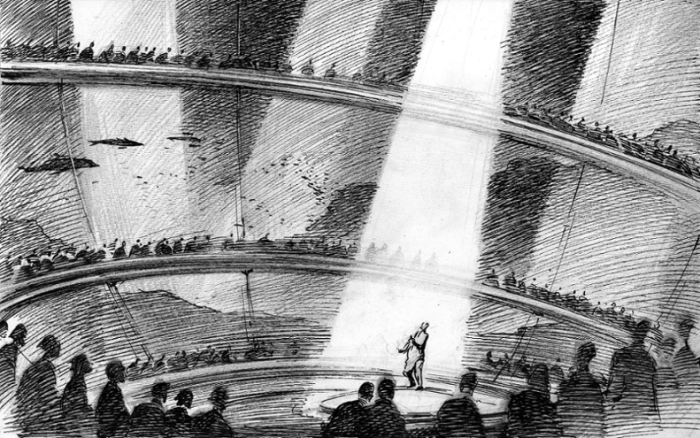
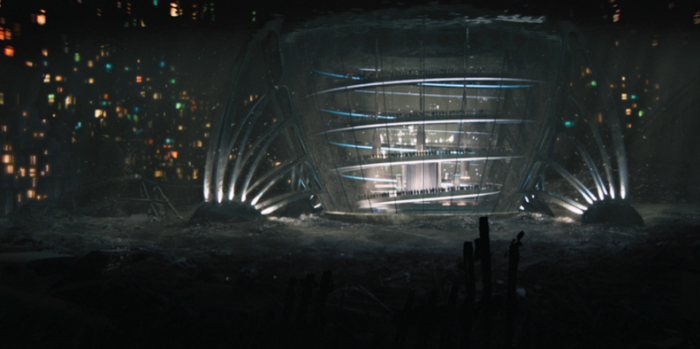
In order to welcome the Belgian comic book artist into the adventure, the young filmmaker first sends him his graphic novels through Benoît Peeters, Schuiten’s writer on Les Cités Obscures. Villeneuve knew that Peeters had also revisited the genre in the 80’s with photographer Marie-Françoise Plissart (Minuit) and is therefore open to his creative approach. A letter is attached to the two books, like a bottle thrown at sea. We already know Schuiten’s answer.
On June 11th, 2007, Martin Villeneuve arrives in Brussels, feverish. “For me it was like meeting Steven Spielberg! I went up to the top floor of his house, in this bright studio with large angled windows offering a panoramic view of Brussels, and where the walls are covered with books. While talking over the phone, he was working on a board of the first volume of La Théorie du Grain de Sable. I was obviously very impressed to watch him at work. Hanging up the phone, he goes: ‘So, tell me everything! What is this project, Mars et Avril? Why did you think of me?’ After about an hour of explanation, he interrupts me and says: ‘All right, you’ve said enough.’ I was afraid I had made a bad impression… A pause, then he continues: ‘You convinced me! I like this kind of bold, experimental project.’ Obviously very touched, I go: ‘Are you telling me that you’d be willing to work on my film?’ And he replies: ‘You wouldn’t be here if your project didn’t interest me. As a designer, you always have to ask yourself how you can be useful. Now, here’s a project where everything is yet to be done! I want to best serve your vision. So tell me what you want me to do.’ I’ll remember this conversation all my life, as a dream come true.”
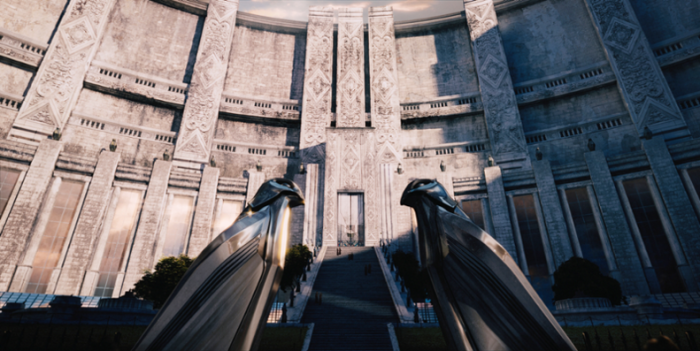
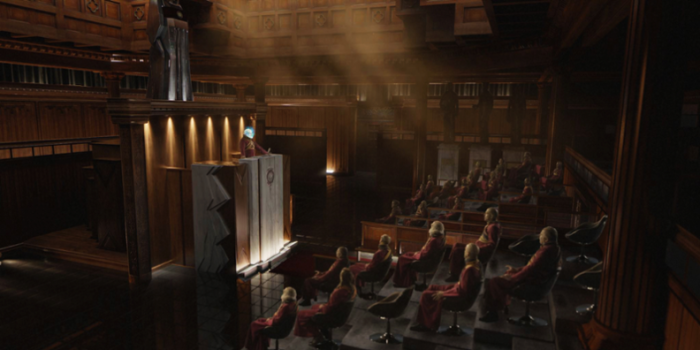
And that’s how François Schuiten finds himself involved as a production designer on the feature film debut of a young Canadian. His job: to develop the visual language of the film, from pre-production to post-production, including of course the shooting itself. After this first meeting, François asks Martin to finish his script and complete the financing of the film, and to come back to him a year later to start working.
The project evolves. And as with any science-fiction movie, Villeneuve is planning to shoot his actors on green screen and embed his CGI sets and visual effects afterwards. Since the film was to be shot in only 25 days and on a very tight budget of 2.3 million CAD, the key to making it work laid in preparation. The 1200 shots were hand-drawn as storyboards and then edited with the dialogues in a detailed, two-hour long animatic that mapped out every detail before shooting. In May 2008, Martin is back in Brussels. The first shooting segment is scheduled less than four months later in Montreal. But in between meetings – François will be in Montreal in September of the same year and in December 2011 – the two men touch-base as often as they can through Skype. They both draw, one to be understood, the other to submit his concepts. Furthermore, François surprisingly turns his filmmaker into a librarian. “I didn’t have the budget to hire a researcher, says Martin. So I played this role myself for a year and a half. It was like going back to university and work for a teacher I admired. I walked around architectural firms, student competitions, libraries.” But what did the director look for exactly? Traces of everything architects and urban planners had imagined for Montreal. Schuiten wanted to look as far as possible in the past and in the future. Here we find the Schuiten & Peeters duo way of working for Les Cités Obscures. To create the cult-album Brüsel, for example, the authors had devoured books and archival materials of all kinds.
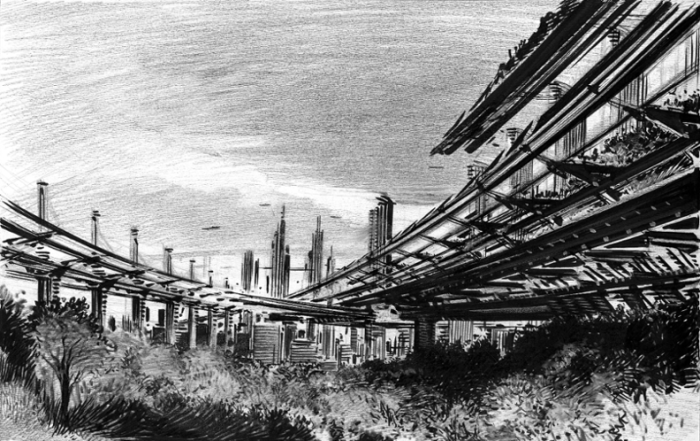
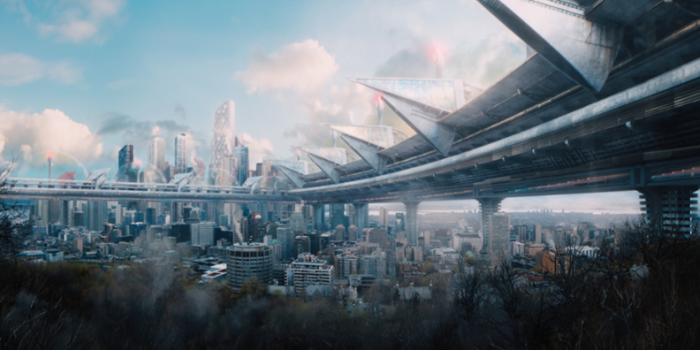
Schuiten’s imagination therefore comes from pre-existing reality, more than we might actually think. Over a period of six months, he sent Martin Villeneuve and photographer Yanick Macdonald in the streets of Montreal, where they took thousands of pictures at night. “We would meet at the Old Port, and then climb to the top of a tower to take aerial views,” recalls Villeneuve. The idea was to create an image bank. Schuiten would react to this material, draw on top, and add layers. A kind of Ping-Pong game that lasted several years, until the director had a strong, accurate and consistent vision regarding the visual effects for each environment. “As we had very little budget for post-production, knowing exactly what I wanted was a prerequisite for Montreal-based post-production company Vision Globale to create the 550 VFX shots. All these years of working with Schuiten have somehow allowed the film to be completed. Mars et Avril is a series of little miracles, and collaborating with François Schuiten is one of them.”
Mars et Avril uses music and instruments to create a poetic tale of fantasy and desire in a futuristic vision of Montreal. The future is always a reinterpretation of the past, but it is necessary for the viewers to feel this vision. “We had to get the futuristic feel down – the climate, the tension, the aesthetics, the sets. François Schuiten’s job was to make sure the visual elements of the film were consistent. ‘Consistency is not something you see, but something you feel,’ he often said. The power of suggestion is central in this project. The story has roots in fantasy and desire. I find fascinating how images can create desire. The relationship between what is hidden and what is shown. The most interesting images are always those born in the imagination of the audience – which we cannot see.”
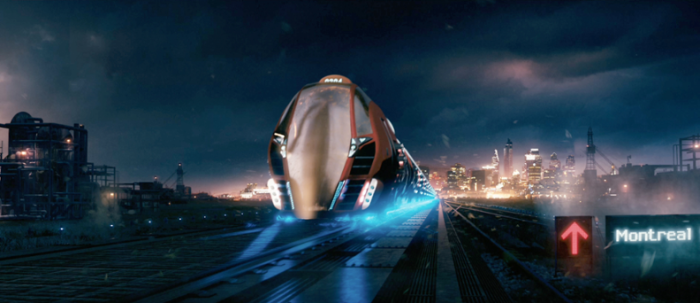
“Schuiten wants to best serve the director’s vision, but in order to be a valuable partner in his eyes, one must be rigorously prepared! says Martin Villeneuve. He was sensitive to the fact that our budget was very tight, and he sought simple, ingenious and elegant solutions, always making sure that our images did not distract from the characters. Special effects must boost the credibility of a scene, never take over it. Rather than try and make ‘beautiful designs,’ his main concern was to find a clean visual style to the film, so that it would have its own identity. He also wanted to avoid breaks in style between the real sets and virtual environments, and between the establishing shots and close-ups revealing the intimacy of the characters.”
That probably sums up Schuiten’s global approach to cinema. Whatever the budget, whatever the purpose, whether it’s a blockbuster or an indie film, a beginner’s project or that of an established filmmaker, for him it’s just about finding meaning for what he does. What can he bring to the film? What’s the relationship between his world and the director’s world? How can the project benefit from what he has developed in his comic books – diverted documentation, reinterpreted reality, credibility of his visions…? And at the heart of it all, there must be some deep roots. How are we engaged or in phase with what makes us as human beings? How can we give all of ourselves for a common vision?
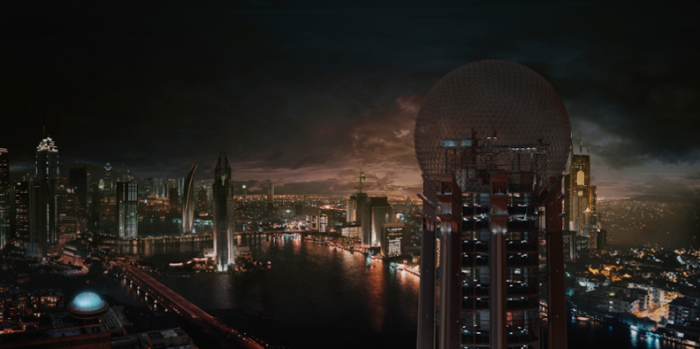
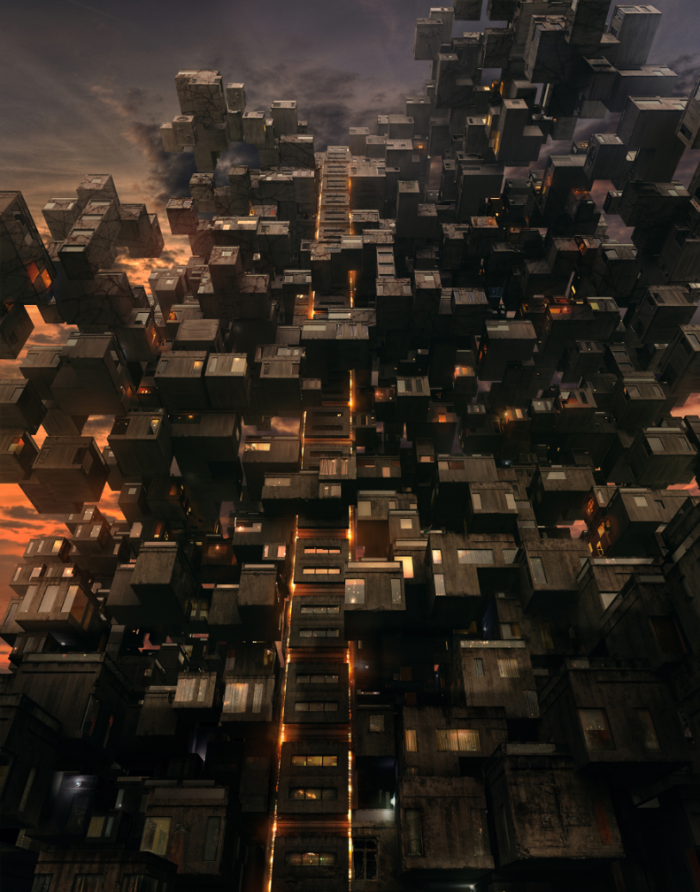
“Schuiten liked the idea of getting into the veins of Montreal. He insisted on the fact that when you tell a story, you have to start with something you know, your origins. To speak to the world, you have to start with your roots. Architecturally speaking, Montreal is, after all, quite a chaotic city, and chaos is definitely the wave of the future. The days of monolithic cities are over. Together, we tried to organize this chaos, to give it some sort of meaning. We had to envision new tensions, tell the story of the city’s evolution and stay on topic – as in Montreal in the future. For example, in my script I had a bar hovering in a bubble over the city, and he told me: ‘You have a gorgeous bubble like that in Montreal: Buckminster Fuller’s Biosphere. That’s what we’re going to use, and we’ll drop it at the top of a tower!’ I also wanted to set a part of the action in the artistic ghetto, small blocks stacked one on top of the other. Then, he told me: ‘That too you have: Habitat 67! We’ll simply make it much bigger.’ We made contact with Moshe Safdie, architect of Habitat 67, and Environment Canada for the Biosphere, and involved them in the process.”
Today, what Schuiten recalls from this adventure is that he has participated in a great human utopia. “Martin took a lot of risks – a first feature in a genre such as science-fiction, it takes some guts! He even had to re-mortgage his house. I tried to support him throughout the project. This loyalty has resulted in a work of great consistency, which involved me from beginning to end, until the film’s poster in fact, which is a first for me. I didn’t draw it, as it would’ve made no sense to ‘sell’ my world – the director is Martin Villeneuve and no one else. But I assembled some images from the movie and had a graphic designer retouched them. Surprisingly, the distributor accepted one of the two projects I submitted.”
